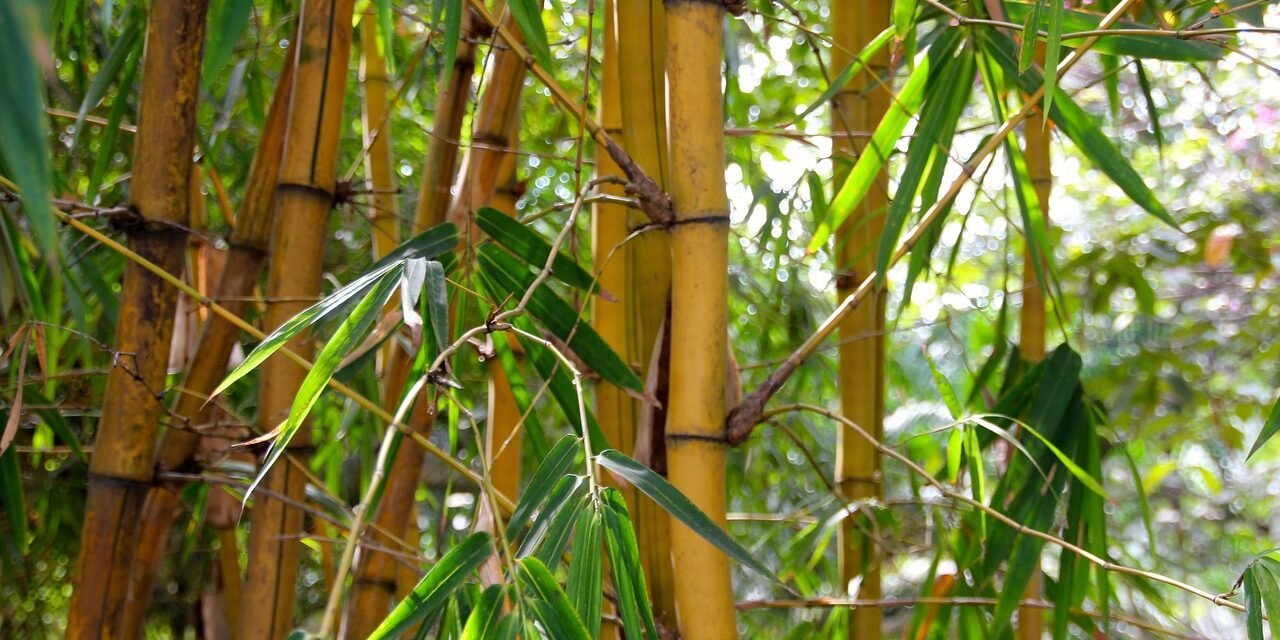Bamboo has long been a quiet but powerful presence in Jamaica. Though it’s often overshadowed by more iconic symbols of the island—like reggae music or jerk seasoning—bamboo has deep cultural, economic, and environmental significance. It’s not just a plant; it’s a versatile resource that has helped shape Jamaican daily life, artistic expression, and sustainable development.
A Natural Tool for Everyday Life
Bamboo has been used for generations in Jamaican households. Its strength, flexibility, and fast growth make it a go-to material for building and crafting. From fences and yam sticks to fish pots and furniture, bamboo offers a low-cost, renewable option that supports local, self-reliant living.
In rural areas, farmers use bamboo to build temporary shelters, create irrigation channels, and construct trellises for growing crops. Its natural resilience makes it ideal for these tasks. It’s strong enough to last through harsh weather, yet light enough to transport without machinery.
Cultural Symbol and Creative Muse
In Jamaican folk culture, bamboo is more than just practical—it’s symbolic. Bamboo plays a role in Anancy stories and traditional festivals, where it’s used in costumes, props, and musical instruments like the bamboo fife. It’s often featured in crafts and carvings sold in local markets and tourist hubs, reflecting its deep roots in island identity.
Artisans continue to use bamboo to make baskets, lampshades, mats, and even jewelry. These crafts support micro-economies, especially for women and older craftspeople who pass down traditional skills. The material itself becomes a link between generations, preserving knowledge and pride in local culture.
Environmental Powerhouse
Bamboo isn’t just culturally important—it’s environmentally critical. As the world faces the twin crises of climate change and deforestation, bamboo stands out as a sustainable solution. It grows incredibly fast, sometimes up to three feet a day, and requires little water or fertilizer. Unlike trees, bamboo can be harvested without killing the plant, making it a renewable resource that regenerates quickly.
In Jamaica, bamboo is being explored as a tool for reforestation and land rehabilitation. It helps stabilize soil, prevent erosion, and improve water retention. In areas damaged by mining or deforestation, bamboo can kickstart ecological recovery.
Its ability to absorb carbon dioxide is also significant. Bamboo forests can sequester more carbon than many tree species, making them a key ally in climate mitigation efforts. As Jamaica pushes toward greener development and more sustainable practices, bamboo has an important role to play.
Economic Potential Waiting to Grow
Despite its benefits, Jamaica has only scratched the surface of bamboo’s potential. Organizations like the Bamboo Industry Association of Jamaica and the Bureau of Standards have been working to promote bamboo-based industries, from construction materials to paper, biofuels, and textiles.
There’s growing interest in bamboo as an export commodity, especially as global demand for sustainable materials increases. With proper investment and infrastructure, bamboo could become a cornerstone of a green economy in Jamaica—creating jobs, reducing imports, and opening new markets for rural entrepreneurs.
The Way Forward
To fully unlock bamboo’s potential, Jamaica needs to balance traditional knowledge with modern innovation. That means investing in training, research, and value-added processing. It also means protecting bamboo groves from overharvesting and monoculture risks by promoting diverse, well-managed ecosystems.
Bamboo isn’t just a part of Jamaica’s past—it’s part of its future. It offers a path toward sustainable living rooted in cultural pride, environmental care, and economic opportunity. By treating bamboo as both a heritage and a resource, Jamaica can lead the way in showing how a humble plant can power a more resilient world.









